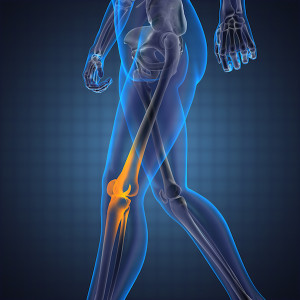
Knee surgery can address various conditions that cause pain in the knee. Initial treatment involves the use of nonsurgical therapies. However, in certain situations, knee surgery is may be necessary.
Orthopedic Institute of the West, led by kind board certified orthopedic surgeon Dr. Brandon Gough provides treatments for the knee, shoulder and hips to patients in Phoenix, Scottsdale, Arizona, and other neighborhoods and cities in this amazing part of America.
COMMON TYPES OF KNEE SURGERIES
ARTHROSCOPY FOR TRIMMING A TORN MENISCUS
Meniscectomy involves removing a part of the meniscus cartilage from the knee joint. The meniscus is a wedge of cartilage that absorbs shock and lies between the bone ends to offer support and cushioning to the joint. In case the meniscus tears are small, the surgeon can trim these to relieve the torn meniscus symptoms.
MENISCUS REPAIR
This procedure surgically repairs the damaged meniscus. The meniscus repair restores the normal knee anatomy and has a favorable long-term prognosis, when successful. But it is a more involved procedure, and has a longer recovery associated with it. The recovery is not always possible due to the limited supply of blood to the meniscus.
LATERAL RELEASE
The kneecap goes up and down the end of the thigh bone in a groove of cartilage. It can be pulled to the outside of this groove or even dislocate entirely from the groove leading to pain when the knee joint is bent. The surgeon will perform a lateral release to loosen the ligaments that pull the kneecap towards the outside of the groove.
The lateral release surgery is usually undertaken for patients with vague knee pain symptoms. Surgeons have been more discerning in recent years regarding which patients may be suitable candidates for lateral release.
MENISCUS TRANSPLANT
Meniscus transplantation involves the placement of the meniscus from a donor into a patient who has had their meniscus taken out. This procedure is ideal for patients who have had their meniscus removed and then begin to experience knee pain.
It cannot be used to address an acute meniscus tear. Instead, it is performed when persistent pain occurs in the knee following the removal of the entire meniscus.
ACL RECONSTRUCTION
The anterior cruciate ligament (ACL) is one of the four major ligaments found in the knee. It is crucial for knee stability, and individuals who experience frequent ACL injuries usually complain of feeling like their knee is giving out from beneath them.
Many patients with an ACL tear choose to undergo surgical treatment. These injuries are usually associated with sports activities, but they can also occur in the course of routine activities.
KNEE REPLACEMENT
A knee replacement involves the removal of the bone and cartilage on the end of the femur (thigh bone) and the top of the tibia (shin bone). The procedure is performed with precise tools to develop surfaces that can hold the implant appropriately. The surgeon then places a metal or plastic knee replacement implant, which will function as a new knee joint.
They may also replace the kneecap surface depending on the state of the cartilage beneath the kneecap. The knee replacement surgery has a high success rate with around 90 percent of the recipients reporting good long-term outcomes.
Cordial board certified orthopedic surgeon Dr. Brandon Gough receives patients from Phoenix, Scottsdale, Arizona, and other suburbs and neighborhoods in The Grand Canyon State for knee, hip, and shoulder treatments.
For more information about hip and knee procedures and treatments by Arizona Board certified orthopedic surgeon, Brandon Gough, M.D., please click here or call us at 602-359-3088. Taking new patients in and around Phoenix, Scottsdale, Glendale, Tempe, Mesa and surrounding Arizona cities.


